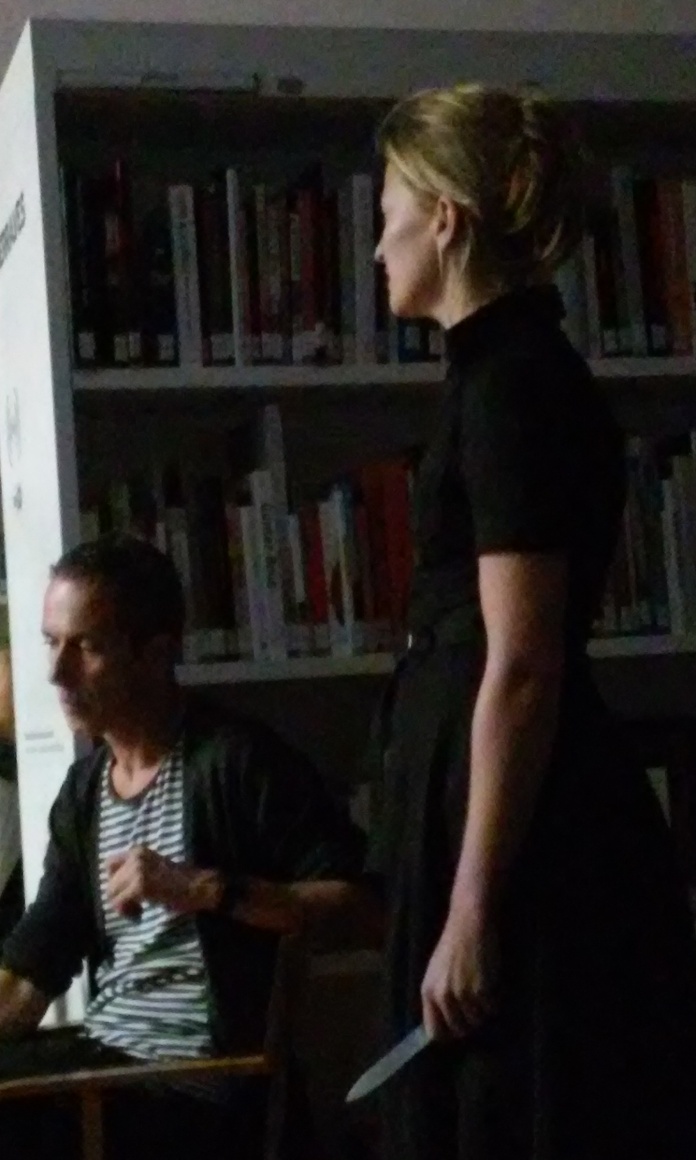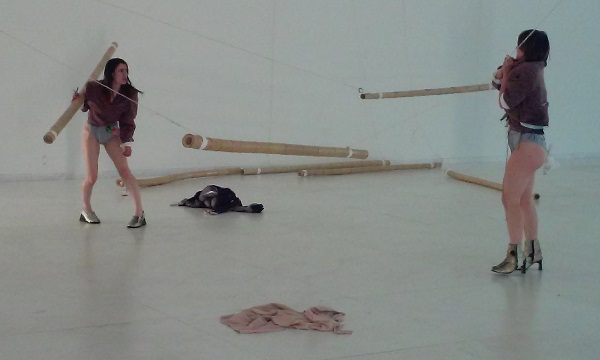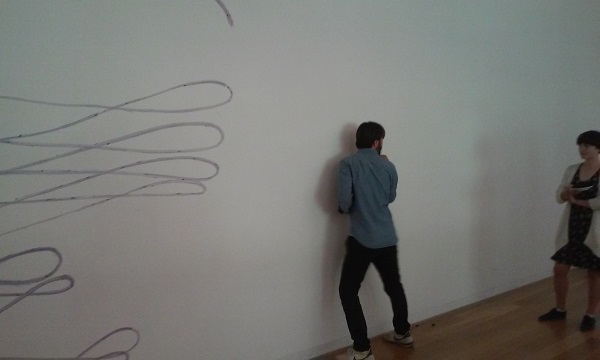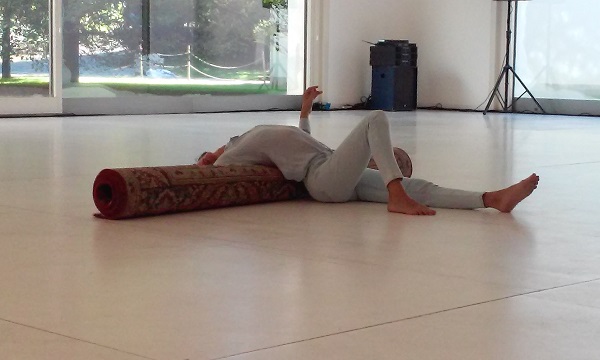The Serralves Foundation in Porto has organised two days of performance art, a rather modest event in comparison to the Nouveau Festival at Centre Pompidou or Performa, but the compact timeframe of these two days displayed a wide variety of approaches, and therefore offered an opportunity to examine the very definition of performance art. In such a vein, does the simple reading of a text (a text which was not fully comprehensible to me), read without the least theatrical intonation and with a heavy monotone voice during roughly an hour, really constitute performance art (Isabel Carvalho, Tartaruga)?
Conversely, even in understanding even less of the text (because it was in Galician), a monologue that was intense, passionate and alive due to the palpable emotion evoked by the artist – a blonde, tragic widowed figure roaming the library shelves with knife in hand – awakened in the spectator an emotional intensity beyond simple comprehension, was much closer to performance art than theatre, and was incredibly engaging (Loreto Martinez Troncoso, A Espera).
There are examples of performance art where I am a simple spectator, a passive witness, and other examples where I play an active role, a slight role but nonetheless crucial for me. There are some intense artistic performances requiring attention at all times, and others that unfold slowly, aiming at dreary exhaustion. As simply a spectator, I was fascinated by two pieces of performance art that were particularly energetic, I daresay even violent: the piece by Anastasia Ax (with Lars ; Exile) in the entrance hall of the museum, which involves destroying an installation made of plasterboard and spraying it with black ink in the entrance hall of the museum with the frenzy of a screeching maenad, takes your breath away and leaves you stunned (the next day there was a change in rhythm, with archaeologists surveying the ruins).
The other performance which took my breath away was the one by the duo New Noveta, a more ritualised performance, where two women scantily clad attempted to create an absurd, Sisyphean stain, and they built a network within the space, a mesh of ropes and bamboo, only to then dismantle it, in a rather impressive eruption of primal, burlesque energy (Chvalia Abutak, Amethyst).
Gentler, more harmonious, meditative and poetic was the performance of the harpist-masseuse duo Vivo with Loreto Martinez where a young woman sensually massaged a stretched out body (that we initially believe to be a female figure, but who at the end was revealed to be a man with long hair), while another woman played the harp (her glissandi and pizzicati echoing the masseuse’s movements) and a third accomplice who accompanied the rest of the action with noises, sounds, bells, laughs and murmurs (Ao Vivo).
One of the most powerful performances was Alex Cecchetti’s (Marie and William) in which, while tracing spirals onto the wall with crushed blackberries, he carried the audience along a slightly absurd poetic narrative, until the moment where I believed it revealed a reflection on narrativity, the way in which a story, any type of story is constructed, unfolds, unwinds, between before and after, between the past and the future, between the real and the unreal.
Probably , the type of performance art to which I am least responsive (apart from Vexations) is that which relies on exhaustion, on duration, on the incessant repetition of the same motif, the same theme, that we can grab hold of, even enjoy, a moment, in which the stretching out of the performance unsettles and bores, either involving the playing of a drum (Kovacs & Doherty, Increments) or the bodily appropriation of a rug (Maria Hassabi, Solo).
The evenings concluded with a participatory performance where the collective Musa Paradisiaca offered bread (dried) and wine to the participants in a ritual that was both sensual and religious (Cantina-Maquina). However, the performance that left me with the most vivid memory was a walk backwards through the woods of the Foundation’s park (Walking Backwards), where unsure on my legs made jelly-like by the destabilising experience of walking backwards, accompanied by Alex Cecchetti’s voice guiding me from behind, I discovered the trees within the park, their beauty, their characteristics. The concentration required, the absence of a single soul in the vicinity, and the poetic atmosphere that was thereby generated enchanted me. Gradually, we were speaking about mythology and history, Daphne’s laurel tree, the aphrodisiac deadly nightshade , the melancholia of Blanche Daubin Cabral. At the end of the journey, continuing backwards, eyes turned upwards to the sky, I listened to the gentle voice, reminding me of the canopy that I had first glimpsed from my baby carriage, and that I shall see again in my last moments when with the offering of an ancient Greek coin between my teeth, my stretched out body will float outwards on the last boat; I feel the tears rising.
Pictures by the author, except the last one, from the artist’s website.
Read this article:
in the original French; alt.
in Spanish
Original publication date by Lunettes Rouges: September 22, 2015.
Translation by Farha Tahera Quadri







Pingback: Performances en tout genre | lunettesrouges1